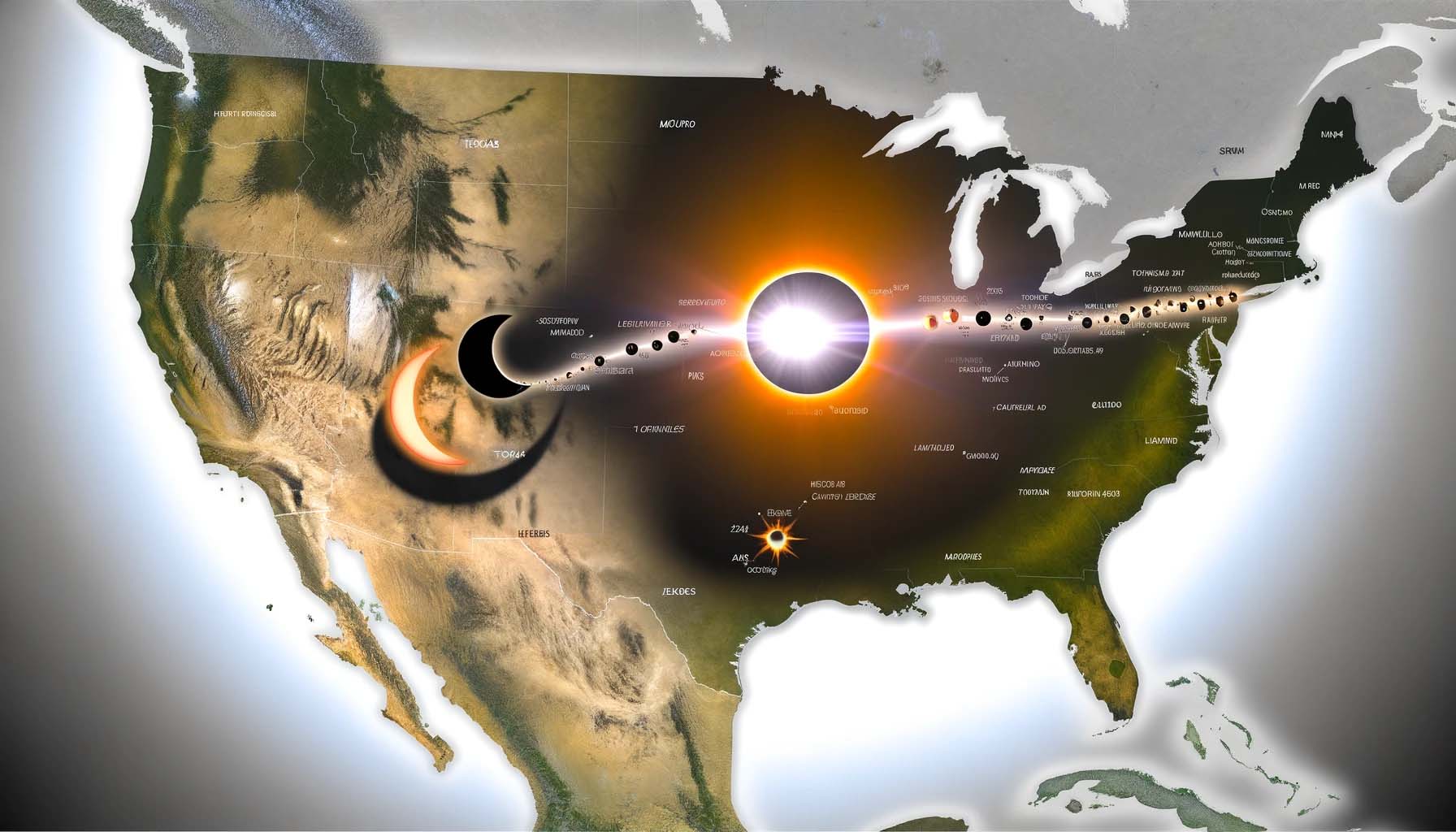On April 8, 2024, North America will be captivated by a rare celestial spectacle: a total solar eclipse. Unlike the more common partial eclipses, this event offers an extraordinary opportunity for millions across Mexico, the United States, and Canada to witness daytime turn into twilight. The eclipse’s path of totality, a narrow corridor where the Moon completely obscures the Sun, will provide a unique stage for an array of astronomical phenomena (NASA Science) (NASA Science).
This 2024 eclipse is distinguished by its significant duration of totality, allowing for an extended observation of the Sun’s corona, the outer atmosphere usually hidden by the Sun’s brilliant light. Observers situated along the path of totality will experience up to 4 minutes and 28.2 seconds of total darkness, a time when the Sun’s corona becomes visible, revealing its stunning structure and dynamics.
One of the lesser-known and visually stunning features visible during this brief window of totality are solar prominences. These are large, bright features extending outward from the Sun’s surface, caused by the Sun’s magnetic field. They appear as pink or red loops and arcs, dancing along the edge of the moon-shadowed Sun. Observers and photographers may catch a glimpse of these phenomena just before or after totality, adding a splash of color to the eclipse experience (NASA Science).
Moreover, the total solar eclipse of 2024 is not just a feast for the eyes but also a moment of scientific interest and discovery. NASA’s interactive Eclipse Explorer map, developed using a variety of scientific data, allows users to explore the eclipse in unprecedented detail. This digital tool provides insights into what will be visible from different locations, offers predictions of the corona’s appearance, and compares the path of this eclipse to those of previous events (NASA Science).
The eclipse will also provide an opportunity to witness fascinating atmospheric effects on Earth. As daylight dims, temperatures may drop, and animals could behave as if night has fallen, offering a surreal experience that highlights the interconnectedness of the Earth, Moon, and Sun. This celestial event underscores the beauty of the cosmos and the importance of celestial dynamics in our solar system.
NASA emphasizes the importance of safety during the eclipse, reminding viewers that except during the totality, looking directly at the Sun without proper protection can cause severe eye damage. Special solar viewing glasses or indirect viewing methods are recommended for the partial phases of the eclipse (NASA Science).
The 2024 total solar eclipse presents a rare opportunity for both awe-inspiring views and scientific exploration. Whether through direct observation along the path of totality or via digital platforms like NASA’s Eclipse Explorer, this event promises to unite millions in a moment of cosmic wonder, reminding us of the marvels beyond our world.




